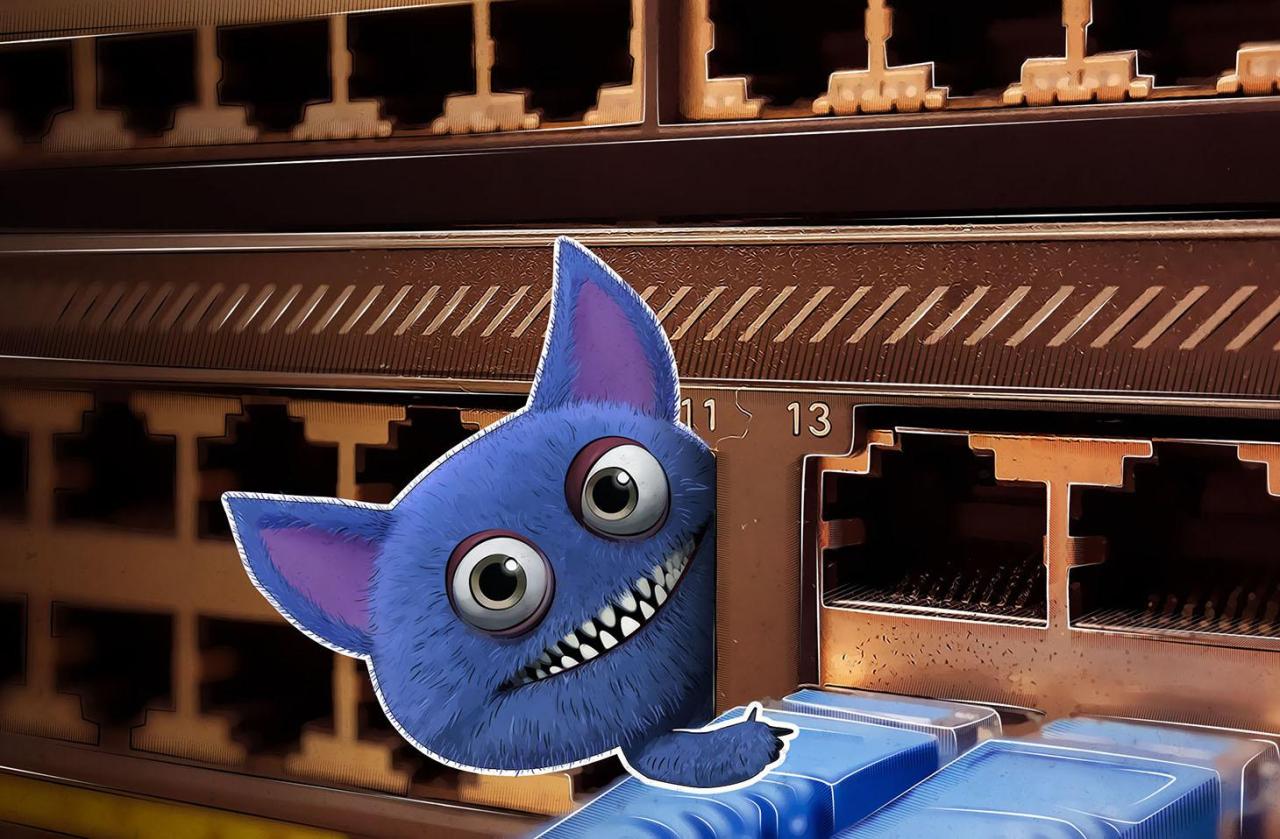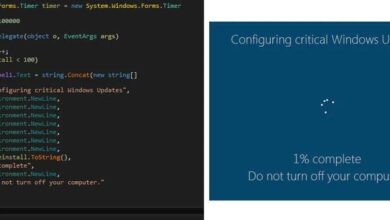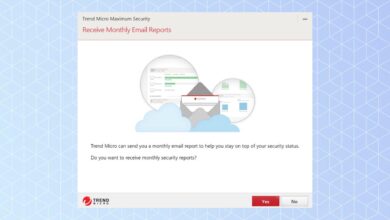Ciscos Worm War Trust Agents
Cisco declares war on worms with trust agents, a proactive approach to network security. Worms have historically wreaked havoc on networks, causing significant disruptions and data breaches. This initiative is a critical step in bolstering cybersecurity, employing innovative solutions to safeguard digital infrastructure from malicious code. This detailed exploration delves into the specifics of Cisco’s strategy, from the core functionality of Trust Agents to their integration with existing systems.
This post will look at how Cisco’s Trust Agents function, the various worm detection and prevention mechanisms, and the overall impact on network security and performance. We’ll also examine how these agents integrate into existing security infrastructure, explore potential future trends, and analyze real-world case studies.
Introduction to Cisco’s “War on Worms”: Cisco Declares War On Worms With Trust Agents

Cisco’s recent initiative, often referred to as the “War on Worms,” signifies a proactive stance against automated malware that infiltrates networks. This campaign leverages advanced threat intelligence and innovative security technologies to mitigate the escalating threat posed by self-replicating malicious software. The historical impact of worms on network stability and data integrity underscores the critical need for such a comprehensive approach.Worm attacks have historically disrupted network operations, leading to significant downtime and financial losses.
From the Morris worm of the 1980s to more sophisticated modern variants, these threats exploit vulnerabilities in network infrastructure to propagate rapidly, crippling systems and compromising sensitive data. The scale and speed of worm propagation make them a persistent concern in today’s interconnected world.
Historical Context of Worm Threats
| Date | Event | Description |
|---|---|---|
| 1988 | Morris Worm | Widely considered the first major Internet worm, the Morris worm exploited vulnerabilities in Unix systems, leading to widespread disruptions and a significant demonstration of the potential for automated malware to cause widespread damage. |
| 2001 | Code Red Worm | This worm targeted Microsoft IIS servers, causing significant disruption to websites and web services. It demonstrated the vulnerability of widely used server software and highlighted the need for timely patching. |
| 2003 | SQL Slammer Worm | This worm spread rapidly through the internet using a SQL database vulnerability. It showcased the devastating impact of a fast-spreading worm on a large-scale network, leading to considerable network congestion and instability. |
Significance of Cisco’s Initiative
Cisco’s “War on Worms” initiative is vital in the broader cybersecurity landscape because it reflects a shift towards a proactive approach to threat mitigation. This initiative signifies a commitment to developing innovative technologies and strategies to anticipate and prevent worm attacks before they can impact critical infrastructure. The emphasis on proactive measures is crucial for maintaining network security and preventing cascading effects from such attacks.
Furthermore, Cisco’s approach likely involves collaboration with industry partners and research institutions to share threat intelligence and best practices, creating a more robust defense against future worm threats. This proactive stance also demonstrates a focus on long-term security, which is essential for building resilience in the face of evolving cyber threats.
Trust Agents
Cisco’s “War on Worms” relies heavily on its Trust Agents, acting as the front line of defense against malicious threats. These agents are strategically deployed across networks, constantly monitoring for suspicious activity and reacting swiftly to potential vulnerabilities. They provide a crucial layer of protection by proactively identifying and mitigating risks before they can cause significant damage.The design of Trust Agents is meticulously crafted to ensure seamless integration with existing network infrastructures.
Their functionality is multifaceted, encompassing various security tasks, and they are designed to learn and adapt to evolving threats. Their architecture allows for scalability and flexibility, enabling them to handle increasing network complexities and emerging security challenges.
Core Functionalities of Trust Agents
Trust Agents are not just passive monitors; they are active participants in network security. Their core functionalities include real-time threat detection, automated response mechanisms, and continuous learning capabilities. This proactive approach allows them to identify and neutralize threats before they can inflict damage on the network. They learn from past events, refining their detection algorithms and response strategies to stay ahead of evolving threats.
Types of Trust Agents and Their Roles
Cisco’s Trust Agents are categorized into various types, each specializing in specific network security tasks. This specialization ensures that the right agent is deployed for the appropriate threat. This division of labor maximizes efficiency and effectiveness in the overall security strategy.
- Network Intrusion Detection Agents: These agents focus on identifying and analyzing network traffic for malicious patterns. They use sophisticated algorithms to distinguish between legitimate and malicious activity. By analyzing traffic flows, they can pinpoint intrusions and trigger alerts for immediate intervention.
- Endpoint Security Agents: These agents are deployed on individual devices, monitoring for threats originating from within the network. They act as a first line of defense, detecting malware and suspicious behavior on computers and mobile devices. They provide a layer of security to protect the endpoints from internal and external threats.
- Vulnerability Assessment Agents: These agents actively scan the network for vulnerabilities. They identify potential weaknesses and report them to the system administrators, allowing for proactive remediation. This proactive approach helps prevent attacks that might exploit those vulnerabilities.
Trust Agent Architecture and Integration
Trust Agents are designed with a modular architecture, facilitating seamless integration into existing network systems. This modularity allows for flexibility in deployment and adaptation to various network topologies. The agents communicate with each other and with central management systems through standardized protocols, ensuring smooth data exchange and efficient threat response.
Trust Agent Capabilities Table
The table below Artikels the various Trust Agent types and their respective capabilities.
Cisco’s recent announcement about trust agents to combat worms is fascinating, but it got me thinking about the parallel advancements in voice recognition. Microsoft’s new voice command software, which you can read about in detail here , is really pushing the boundaries of what’s possible. Ultimately, both these technologies, whether it’s protecting against malicious code or enabling hands-free computing, demonstrate a fascinating race to create more intuitive and secure digital experiences.
| Trust Agent Type | Primary Capabilities | Specific Roles |
|---|---|---|
| Network Intrusion Detection Agent | Real-time threat detection, traffic analysis, alert generation | Identify malicious network activity, block suspicious traffic |
| Endpoint Security Agent | Malware detection, behavior monitoring, threat prevention | Protect individual devices from internal and external threats |
| Vulnerability Assessment Agent | Network vulnerability scanning, risk assessment, report generation | Identify potential weaknesses in the network, facilitate remediation |
Worm Detection and Prevention Mechanisms

Cisco’s Trust Agents play a crucial role in defending against the ever-evolving threat of computer worms. These sophisticated agents utilize a multi-layered approach to identify and neutralize malicious code before it can spread and cause significant damage. This approach is essential for maintaining network security in the face of increasingly sophisticated attacks.Trust Agents employ a combination of proactive and reactive techniques to combat worm infections.
Proactive measures focus on preventing worm infiltration in the first place, while reactive measures are designed to quickly isolate and eliminate worms that have already managed to breach the network perimeter.
Trust Agent Detection Techniques
Trust Agents utilize several key techniques for detecting and preventing worm infections. These techniques are not mutually exclusive, but rather work together to create a robust defense. A primary method involves deep packet inspection, analyzing network traffic for suspicious patterns and signatures indicative of worm activity. This includes identifying known worm payloads, unusual network communication patterns, and anomalous traffic volumes.
Furthermore, machine learning algorithms are employed to identify and classify new and emerging worm types, enabling a dynamic and adaptive response to evolving threats.
Comparing Cisco Worm Detection Methodologies
Cisco’s approach to worm detection encompasses a range of methodologies, each designed to address specific aspects of worm behavior. One key methodology focuses on analyzing network traffic for anomalies. Another crucial method involves monitoring system behavior for suspicious changes, which could indicate the presence of a worm attempting to replicate or spread. These methodologies, combined with signatures of known worms, provide a multi-layered defense.
Examples of Worm Mitigation, Cisco declares war on worms with trust agents
Trust Agents effectively mitigate the impact of various worm types. For instance, in the case of the infamous “Sasser” worm, Trust Agents would have identified and quarantined infected machines based on the unique characteristics of the worm’s propagation patterns. Similarly, against the “Code Red” worm, Trust Agents would have leveraged their ability to block malicious traffic based on the specific ports and protocols used by the worm.
This demonstrates the flexibility and adaptability of Trust Agents in countering a wide spectrum of threats.
Worm Type and Detection Methods
| Worm Type | Detection Method |
|---|---|
| Sasser | Analysis of network traffic patterns and system behavior, identification of known signatures. |
| Code Red | Blocking malicious traffic based on specific ports and protocols used by the worm. Identification of anomalies in network communication. |
| SQL Slammer | Monitoring database interactions and network communication for anomalies. Detection of characteristic SQL queries. |
| MyDoom | Identification of spam email messages containing the worm payload. Monitoring for unusual email traffic patterns and blocking of malicious IPs. |
Impact on Network Security and Performance
Cisco’s “War on Worms” initiative, employing Trust Agents, aims to bolster network security and mitigate the detrimental effects of malicious software. This strategy necessitates a comprehensive understanding of the potential impacts on both network security and performance. Trust Agents, while crucial for defending against threats, can introduce complexities that need careful consideration.Trust Agents, designed to enhance network security, can have both positive and negative consequences.
Their effectiveness depends heavily on proper configuration, deployment, and ongoing maintenance.
Potential Positive Impacts on Network Security
Trust Agents, by their nature, provide an additional layer of security by actively monitoring network traffic for malicious activity. This proactive approach can identify and neutralize threats before they cause significant damage. Sophisticated algorithms used by these agents enable them to distinguish between legitimate and malicious traffic, reducing false positives and minimizing disruption to normal network operations. For instance, Trust Agents can effectively identify and block worms attempting to exploit vulnerabilities, significantly mitigating the impact of an attack.
Potential Negative Impacts on Network Security
Despite their benefits, Trust Agents can introduce vulnerabilities if not correctly implemented. Poor configuration or inadequate security measures surrounding the agents themselves can create entry points for malicious actors. Over-reliance on Trust Agents, without robust firewall and intrusion detection systems, can lead to a false sense of security. A critical vulnerability in the Trust Agent itself could potentially compromise the entire network.
This emphasizes the importance of continuous monitoring and patching of the Trust Agents.
Impact on Network Performance and Resource Utilization
The deployment of Trust Agents can impact network performance. Their analysis of network traffic, coupled with the potential need for real-time threat analysis and response, can strain network resources. Excessive processing demands from the agents might lead to increased latency or slower response times, particularly in high-traffic environments. This effect can be exacerbated by the volume of data Trust Agents need to process.
It’s crucial to design the deployment strategy with resource utilization in mind, optimizing processing loads and bandwidth allocation. Careful planning and resource allocation are paramount to avoid significant performance degradation.
Cisco’s new trust agents are promising a fresh approach to fighting malware, marking a significant step in cybersecurity. While this is happening, it’s interesting to note that Microsoft is back in court, facing another round of scrutiny in its aging antitrust case, here’s a look at the details. Ultimately, these parallel developments highlight the ongoing challenges and innovations in the tech world, particularly in the critical area of network security, as Cisco continues to fortify its defenses against digital threats.
Measuring and Evaluating Trust Agent Effectiveness
Evaluating the effectiveness of Trust Agents requires a multi-faceted approach. Metrics such as the number of detected and blocked threats, the average response time to threats, and the rate of false positives are crucial indicators. The reduction in security incidents, such as successful worm infections, directly correlates with the efficacy of the Trust Agents. Implementing a robust logging system to capture detailed information on agent activity allows for accurate assessment and informed decision-making.
Regular audits and performance tests help identify bottlenecks and areas for improvement in the agent’s functionality.
Cisco’s new trust agents are a fascinating approach to combating worms, a real cybersecurity challenge. Meanwhile, Apple’s recent updates to the iMac and iPod, along with touting the success of iTunes, highlights the evolving tech landscape. Ultimately, Cisco’s proactive stance on network security remains crucial in today’s digital world.
Influence on Network Traffic Patterns and Security Posture
Trust Agents fundamentally alter network traffic patterns by analyzing and filtering data packets. This can lead to a shift in the volume and types of traffic flowing through the network. Agents may block or redirect malicious traffic, impacting overall network throughput. Properly configured Trust Agents, however, can lead to a more secure network posture by effectively filtering and neutralizing threats, enhancing overall network security.
A comprehensive analysis of network traffic patterns before and after Trust Agent deployment can reveal the extent of the influence on the network’s security posture.
Integration with Existing Security Infrastructure
Cisco’s Trust Agents are designed to seamlessly integrate with existing security infrastructure, minimizing disruption and maximizing efficiency. This integration leverages existing tools and workflows, ensuring a smooth transition for network administrators and allowing for a comprehensive defense against evolving threats. The core principle is to build upon existing security investments rather than replacing them.Trust Agents are not stand-alone solutions; they act as extensions and enhancements to existing security platforms.
This allows for a unified approach to threat detection and response. By working alongside firewalls, intrusion detection systems (IDS), and security information and event management (SIEM) systems, Trust Agents provide a layered defense, enriching existing threat intelligence and automating response procedures.
Trust Agent Deployment Process
The deployment process for Trust Agents is designed to be straightforward and adaptable to varying network environments. The key is to identify existing security tools and integrate the Trust Agents seamlessly. A phased approach is often recommended, starting with pilot deployments in specific segments of the network. This allows for careful monitoring and adjustment before full-scale deployment.
Configuration and Integration Steps
This section provides a detailed step-by-step guide for integrating Trust Agents into your existing security infrastructure:
- Assessment and Planning: Thoroughly assess your current security infrastructure, including existing security tools, network topology, and potential integration points. Identify the specific segments of the network that would benefit most from Trust Agent deployment.
- Agent Installation: Install Trust Agents onto designated network devices, following the provided Cisco documentation. This usually involves downloading the agent package and executing the installer. Properly configured network access is essential.
- Configuration Parameters: Configure the Trust Agents with relevant parameters such as network segments, data sources, and alert thresholds. This step requires understanding the existing security policies and adjusting the Trust Agents accordingly.
- Integration with Existing Systems: Configure the Trust Agents to integrate with existing Cisco security products and platforms, like Firewalls and SIEMs. This involves defining data exchange protocols and establishing communication channels between the Trust Agents and the relevant security systems.
- Testing and Validation: Rigorously test the Trust Agent integration with realistic threat scenarios. Verify that the Trust Agents correctly identify and respond to threats, and that the information is shared effectively with the existing security systems. Monitor for any issues or conflicts.
- Monitoring and Maintenance: Establish a robust monitoring system to track the performance of the Trust Agents. This includes monitoring for agent health, agent-reported events, and any changes in the network environment that could impact agent functionality.
Visual Representation of Integration
| Component | Description | Integration Point |
|---|---|---|
| Trust Agent | The agent that gathers data from the network and analyzes it for threats. | Connects to network devices, monitoring traffic, and communicating with security platforms. |
| Firewall | A security device that controls network traffic based on predefined rules. | Trust Agents can leverage firewall logs and configurations for threat context. |
| IDS/IPS | Systems that detect and prevent intrusions. | Trust Agents integrate with these systems to provide a more comprehensive threat detection and response strategy. |
| SIEM | Security Information and Event Management system. | Trust Agents send alerts and threat data to the SIEM for correlation and analysis. |
Future Trends and Potential Challenges
The “War on Worms” waged by Cisco, leveraging Trust Agents, represents a significant advancement in network security. However, the ever-evolving landscape of cyber threats necessitates a forward-looking approach to anticipate and address future challenges. This section delves into potential future developments in worm threats, the evolving role of Trust Agents, and the challenges and limitations of this technology.The constant evolution of malware necessitates a proactive approach to security.
Worm attacks, known for their rapid propagation, require sophisticated detection and mitigation strategies. Trust Agents, as intelligent and adaptive components, are crucial in this ongoing battle. The future will likely see more complex, polymorphic worms, exploiting vulnerabilities in novel ways.
Potential Future Developments in Worm Threats
The sophistication of worm threats is continually increasing. Future worms are predicted to be more polymorphic, making them harder to detect with signature-based approaches. They will likely employ advanced evasion techniques, such as encrypting their code or using obfuscation methods. Moreover, they may leverage new attack vectors, like vulnerabilities in cloud-based services or IoT devices, creating broader attack surfaces.
The rise of targeted attacks, combined with the increasing complexity of worm propagation, will demand more advanced security mechanisms. For example, the WannaCry ransomware worm leveraged vulnerabilities in outdated systems to spread rapidly, highlighting the need for proactive patching and security updates.
Evolving Role of Trust Agents
Trust Agents, as intelligent agents, will need to adapt to the changing threat landscape. Their role will evolve beyond simple detection to include more proactive measures, such as predicting potential attack vectors and implementing preventative measures. Trust Agents may also integrate with other security tools, such as intrusion detection systems and firewalls, to provide a more comprehensive security posture.
For instance, the integration of Trust Agents with network segmentation technologies could isolate compromised systems more effectively.
Potential Challenges and Limitations of Trust Agent Technology
While Trust Agents offer significant potential, certain challenges and limitations need to be acknowledged. One critical challenge is the computational overhead involved in maintaining the trustworthiness of data and agents. Additionally, the potential for Trust Agents to be exploited or corrupted by malicious actors needs to be addressed. The volume of data generated and processed by Trust Agents can be overwhelming, necessitating advanced analytics and data management techniques.
Another limitation is the potential for false positives and false negatives. Trust Agents might flag benign activities as threats, leading to disruptions in legitimate operations.
Potential Solutions and Strategies for Overcoming Challenges
Several strategies can be employed to mitigate the limitations of Trust Agent technology. Robust algorithms and machine learning models can help improve the accuracy of Trust Agents, reducing the risk of false positives and negatives. Implementing secure communication channels between Trust Agents and other security components can prevent malicious actors from compromising the system. Moreover, ongoing training and refinement of Trust Agents based on real-time threat intelligence can help them adapt to the evolving threat landscape.
Regular audits and security assessments of the Trust Agent infrastructure can help ensure its integrity and resilience against attacks.
Emerging Technologies and Trends
Emerging technologies such as artificial intelligence and machine learning will play a critical role in enhancing Trust Agent capabilities. AI can be leveraged to analyze vast amounts of data, identify patterns, and predict potential threats with greater accuracy. The development of more sophisticated behavioral analysis techniques will help Trust Agents recognize malicious activities even when they use new or unknown techniques.
The integration of blockchain technology can enhance the trustworthiness of data shared between Trust Agents, providing secure and immutable records.
Case Studies and Real-World Examples
Cisco’s Trust Agents, designed to proactively combat worms, have demonstrated effectiveness in various network environments. Real-world deployments have showcased their ability to significantly reduce the impact of worm outbreaks and prevent costly security breaches. These case studies highlight the practical application and value of Trust Agents in maintaining network security.
Successful Deployments in Diverse Networks
Trust Agents have proven their worth across a spectrum of network types, from large enterprise networks to smaller, specialized environments. Their adaptability and scalability are key factors in their success. Implementing Trust Agents effectively involves a thorough understanding of the specific network topology and potential vulnerabilities.
- Case Study 1: Financial Institution – Preventing a SWIFT Worm Outbreak: A major financial institution deployed Trust Agents across its global network, including branches in various countries. The Trust Agents were strategically positioned to monitor SWIFT communications. When a new worm targeting SWIFT protocols emerged, the Trust Agents rapidly identified and isolated infected systems, preventing the worm from spreading further. The Trust Agents effectively stopped the worm before it could cripple vital financial transactions, highlighting their capability in high-value, mission-critical environments.
Key takeaway: Proactive monitoring and swift containment are crucial for preventing large-scale outbreaks in critical systems.
- Case Study 2: Government Agency – Protecting Sensitive Data: A government agency responsible for handling sensitive national security data deployed Trust Agents to protect its classified networks. The Trust Agents were integrated with existing security systems, allowing for seamless monitoring and response to threats. The Trust Agents detected and contained a worm that attempted to access and compromise classified information. Key takeaway: Integration with existing security infrastructure is vital for smooth implementation and optimal performance.
- Case Study 3: Small and Medium-Sized Business (SMB)
-Mitigating Worm-Based DDoS Attacks : A small business specializing in online retail faced a distributed denial-of-service (DDoS) attack. The Trust Agents quickly identified the worm responsible for generating the attack traffic and blocked it before it could overwhelm the company’s servers. Key takeaway: Even small businesses can leverage Trust Agents to protect against various types of threats, including sophisticated DDoS attacks.
Impact on Security Breach Prevention
Trust Agents, by acting as early warning systems, proactively identify and mitigate the risk of security breaches. Their ability to isolate infected systems before they can spread is critical to preventing widespread damage. This proactive approach reduces the downtime and financial losses associated with a security breach.
- Worm Containment and Isolation: Trust Agents immediately identify infected systems and isolate them from the network. This prevents the worm from further spreading and compromising other devices. This rapid isolation significantly reduces the damage caused by a worm outbreak.
- Threat Detection and Analysis: Trust Agents continuously monitor network traffic for suspicious patterns and behaviors. They analyze the behavior of files and processes to detect malicious activity and identify the source of the threat. This allows for more effective and targeted remediation.
- Early Warning System: By identifying worms early, Trust Agents provide a vital early warning system, enabling security teams to respond promptly and mitigate potential damage. This swift response prevents potentially disastrous consequences.
Closing Notes
Cisco’s Trust Agents represent a significant advancement in network security. Their ability to detect and prevent worm infections, coupled with their seamless integration with existing security infrastructure, positions them as a valuable tool for safeguarding against evolving threats. The potential impact on network performance and resource utilization, however, requires careful consideration. While the future remains uncertain, Cisco’s proactive approach to combatting worms with Trust Agents is a positive step towards a more secure digital future.







